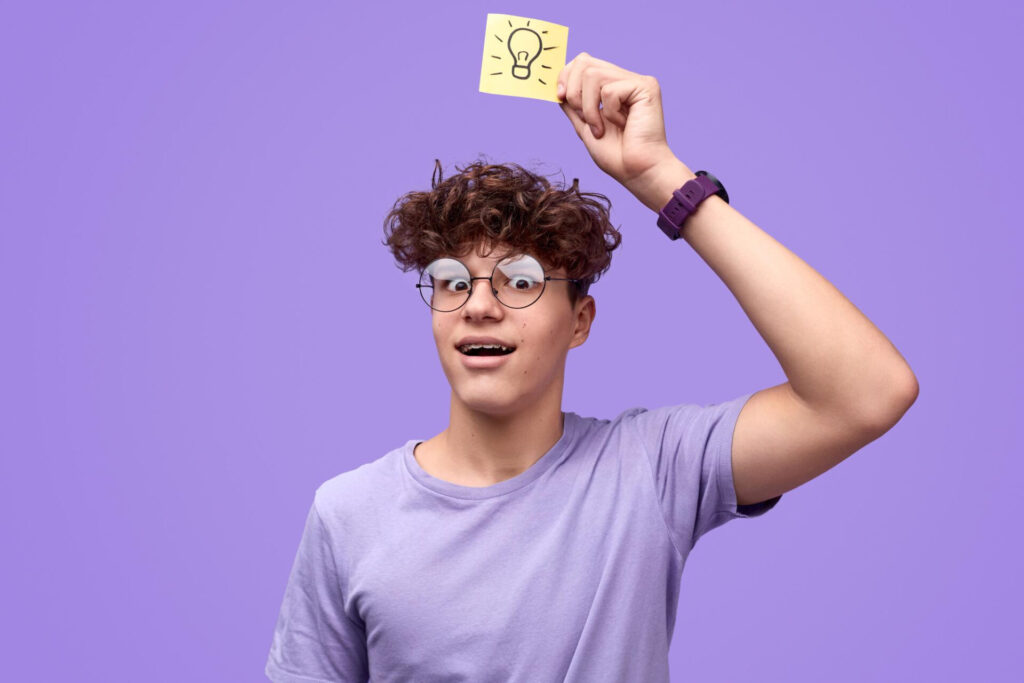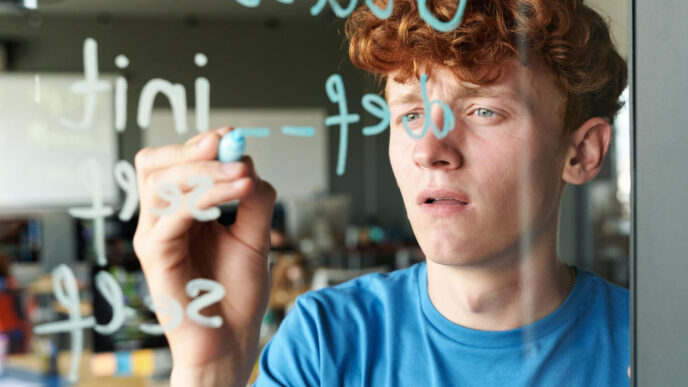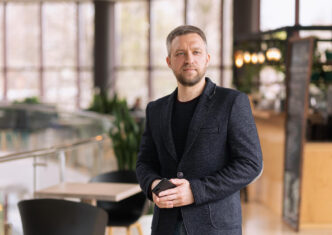Why Your Imagination Deserves Daily Attention
In a world overflowing with deadlines, distractions, and to-do lists, imagination is often pushed aside—as if it’s a luxury reserved for artists or dreamers. But the truth is, your ability to imagine affects far more than just your creativity. It shapes how you think, solve problems, express yourself, and even how you navigate uncertainty. And like any skill, it thrives with regular use.
Imagination Is Your Brain’s Superpower
Think of imagination as the engine behind creative thinking. Whether you’re generating a business idea, writing a story, brainstorming a solution at work, or picturing a better version of your life, you’re using imagination. The good news? You can train it.
Backed by research in neuroscience and psychology, there’s clear evidence that daily practices can increase creative thinking, improve mental flexibility, and even support emotional resilience. And these benefits aren’t reserved for rare “genius” minds—they’re available to anyone willing to make imagination a habit.
“Logic will get you from A to B. Imagination will take you everywhere.”
Albert Einstein
Why Boosting Imagination Daily Matters
You don’t need to quit your job and become a full-time artist to be imaginative. But if you don’t give your imagination daily fuel, you risk falling into mental routines that limit growth and innovation.
Here’s why daily creative habits matter:
- They help you think differently when everyone else follows the same playbook
- They build confidence in your own ideas and insights
- They encourage a mindset of possibility over limitation
What You’ll Learn in This Guide
This article will show you exactly how to boost imagination daily—with science-backed habits, engaging exercises, and creative lifestyle strategies that fit into even the busiest schedule. You’ll learn how to:
✔️ Tap into imaginative thinking with simple, daily routines
✔️ Break through mental blocks that limit creativity
✔️ Use play, art, and even AI as tools to stretch your imagination
✔️ Build a lifestyle that keeps your creative energy flowing long-term
Ready to reawaken your imagination and use it as a powerful tool every single day? Let’s begin.
The Science Behind Imagination
Imagination is more than just whimsical daydreaming—it’s a fundamental cognitive process that shapes our thoughts, decisions, and innovations. Neuroscientists and psychologists have studied the mechanics of imagination for decades, uncovering its deep connections to problem-solving, creativity, and even emotional intelligence. Let’s explore how imagination works in the brain and why it is essential for personal and professional growth.
How Imagination Shapes the Brain
Imagination activates multiple regions of the brain, primarily within the default mode network (DMN)—a system responsible for introspective thinking, memory recall, and creativity. The DMN engages when we allow our minds to wander, brainstorm new ideas, or visualize hypothetical scenarios.
Key brain regions involved in imagination include:
✔️ Prefrontal Cortex – Responsible for planning, decision-making, and complex problem-solving. Imagination helps strengthen this region by encouraging abstract thought and strategic thinking.
✔️ Hippocampus – The center of memory formation. When we imagine new ideas, we often pull from past experiences stored in the hippocampus to create novel connections.
✔️ Parietal Lobes – These help us manipulate mental images, envision scenarios, and engage in spatial reasoning—essential skills for both artistic creativity and scientific problem-solving.
By frequently engaging in imaginative activities, we enhance neuroplasticity—the brain’s ability to adapt and rewire itself. This means that the more we use our imagination, the better our brain becomes at thinking creatively and solving complex challenges.
The Link Between Creativity and Problem-Solving
Many believe imagination is limited to artistic fields, but it plays a crucial role in everyday problem-solving. Studies show that people who regularly engage in creative thinking can:
✔️ Approach problems from multiple angles
✔️ Generate innovative solutions instead of relying on conventional methods
✔️ Adapt more easily to unexpected challenges
For example, Albert Einstein famously credited his ability to visualize concepts as the key to his discoveries in physics. He once said, “Imagination is more important than knowledge. For knowledge is limited, whereas imagination embraces the entire world, stimulating progress, giving birth to evolution.”
Similarly, companies like Apple, Tesla, and Google thrive because of their ability to imagine new possibilities that disrupt industries. Whether you’re an entrepreneur, artist, scientist, or simply someone looking to enhance daily decision-making, strengthening your imagination is a game-changer.
Neuroscience of Imagination
Research in cognitive neuroscience suggests that engaging in imaginative activities can:
✔️ Improve memory retention and recall
✔️ Reduce stress by allowing mental escapism
✔️ Increase cognitive flexibility—our ability to shift perspectives and adapt to new ideas
In a study by Stanford University, researchers found that walking—especially in natural environments—boosts imaginative thinking by up to 60%. This suggests that movement and environment play a key role in cognitive flexibility and creative ideation.
Why Strengthening Imagination Matters
Developing a strong imagination isn’t just about coming up with creative ideas—it enhances how we navigate life. Whether you’re solving a business challenge, writing a compelling story, or envisioning personal growth, an active imagination allows you to break free from limitations and explore new possibilities.
The best part? You can train your brain to think more imaginatively with daily habits and targeted exercises. In the next section, we’ll explore simple yet powerful routines to boost your imagination every day.

Daily Habits to Boost Imagination
Imagination isn’t just something that sparks spontaneously—it thrives when cultivated through intentional daily habits. By making small but powerful changes in your routine, you can consistently fuel creativity and expand your ability to think in new, innovative ways. Here are some science-backed habits to incorporate into your daily life.
Mindful Observation: Seeing the World Differently
One of the most effective ways to enhance imagination is to train yourself to notice the extraordinary in the ordinary. Our surroundings are filled with inspiration, but we often overlook details due to routine and distractions.
How to practice mindful observation:
✔️ Slow down and pay attention – Whether you’re walking down the street, sipping coffee, or waiting in line, take a moment to observe colors, patterns, facial expressions, or sounds you typically ignore.
✔️ Ask questions – When observing an object, place, or situation, ask yourself: What’s the story behind this? How did it get here? What could it become?
✔️ Change perspectives – Try to imagine the world from the viewpoint of a child, an artist, or even an alien visiting Earth for the first time. How would they interpret what they see?
By making mindful observation a habit, you train your brain to see possibilities where others see routine—a crucial skill for imagination.
Freewriting and Journaling: Unlocking the Subconscious Mind
Writing freely without restrictions is one of the best ways to tap into raw creativity. This practice helps silence the inner critic and unlock unexpected ideas.
How to practice freewriting:
✔️ Set a timer for 10–15 minutes and write nonstop without editing or filtering your thoughts. Let your mind flow onto the page.
✔️ Try “stream-of-consciousness” writing where you jot down anything that comes to mind, even if it seems random or nonsensical.
✔️ Use creative prompts such as “What if I woke up in a different century?” or “Describe a world where gravity doesn’t exist.”
Journaling ideas to enhance imagination:
✔️ Dream journal – Write down your dreams each morning to explore hidden creative patterns.
✔️ “Alternate reality” journal – Imagine how your life would be different if you had made different choices.
✔️ “Character study” journal – Observe strangers and write fictional backstories for them.
Writing regularly trains your brain to connect ideas, visualize concepts, and develop richer narratives—all essential for creative thinking.
Engaging with Art and Music: Expanding the Creative Horizon
Exposure to diverse forms of art and music broadens the way you think and process information. Studies show that engaging with artistic expression activates brain regions associated with imagination, memory, and emotional intelligence.
How to use art and music to fuel imagination:
✔️ Explore unfamiliar genres – Listen to music or watch films outside your comfort zone to experience different emotional landscapes.
✔️ Visit galleries and exhibitions – Even if you’re not an artist, absorbing visual storytelling can inspire new ideas.
✔️ Create without judgment – Doodle, paint, or play an instrument, even if you’re not “good” at it. The process matters more than the result.
Engaging with different creative mediums stimulates new neural connections, making your thinking more dynamic and imaginative.
Reading Fiction and Storytelling: Training the Mind to Envision
Fictional storytelling is a powerful mental workout for imagination. When you read fiction, your brain constructs entire worlds, characters, and scenarios—just like an artist creating a painting or a director making a film.
How to enhance imagination through reading:
✔️ Read diverse genres – Fantasy, science fiction, historical fiction, and surrealism push the boundaries of conventional thought.
✔️ Mentally rewrite stories – Imagine alternative endings, new characters, or different settings for stories you read.
✔️ Practice storytelling – Challenge yourself to tell a spontaneous short story every day, even if it’s just in your head.
Reading fiction not only improves creativity but also enhances empathy, critical thinking, and problem-solving—key skills for imaginative minds.
Spending Time in Nature: Stimulating the Brain’s Creativity Centers
Nature has a profound effect on imagination and problem-solving abilities. Studies from Stanford University show that being in natural environments boosts creative thinking by up to 60% compared to urban settings.
Why nature enhances imagination:
✔️ Reduces stress and cognitive overload, allowing the brain to form new ideas
✔️ Engages the senses, providing rich mental stimulation
✔️ Encourages daydreaming, a key component of creative thinking
How to integrate nature into your creative routine:
✔️ Take daily walks in parks, forests, or near bodies of water
✔️ Engage in outdoor activities like hiking, birdwatching, or gardening
✔️ Use natural elements (stones, leaves, branches) as inspiration for creative projects
Nature activates the brain’s default mode network, which is responsible for imagination, introspection, and idea generation.
The Role of Playfulness: Cultivating a Curious Mindset
Children have boundless imagination because they approach the world with a sense of wonder and play. Adults often lose this quality due to societal expectations and structured thinking. However, playfulness is a powerful way to reawaken imagination.
How to embrace playfulness in daily life:
✔️ Ask “What if?” more often – Treat everyday situations as opportunities for creative exploration.
✔️ Experiment without fear of failure – Try new hobbies, improvise, and allow yourself to fail.
✔️ Engage in lighthearted activities – Play games, solve puzzles, or engage in role-playing exercises.
Play encourages open-ended thinking, which is essential for imaginative breakthroughs.

Exercises to Enhance Creativity
Imagination, like any other cognitive skill, can be sharpened with targeted exercises. The following techniques are designed to break mental barriers, encourage unconventional thinking, and unlock new creative pathways. Whether you’re an artist, writer, entrepreneur, or problem-solver, these exercises will help you develop a more flexible and imaginative mind.
The “What If” Game: Expanding Possibilities
The “What If” game is a powerful brainstorming tool that forces you to think beyond reality. It helps stretch your imagination by challenging assumptions and opening doors to unexpected ideas.
How to play:
✔️ Pick a random everyday situation and alter one key detail.
✔️ Ask, “What if this were different?” and explore the potential consequences.
✔️ Keep asking “What if?” to push the idea further.
Examples:
🔹 What if gravity suddenly stopped working for an hour each day?
🔹 What if humans could read each other’s thoughts?
🔹 What if houses could move like vehicles?
The goal is not to find a “correct” answer but to let your imagination roam freely. This exercise is especially useful for storytellers, designers, and innovators looking to think outside the box.
Reverse Thinking: Flipping Perspectives
Reverse thinking is an advanced problem-solving method that involves flipping conventional ideas upside down. Instead of approaching a problem the usual way, you look at it from an opposite or unconventional angle.
How to practice reverse thinking:
✔️ Identify a common assumption in your field.
✔️ Flip it completely and explore the new perspective.
✔️ Ask yourself, “How would this change the way we think, create, or solve problems?”
Examples:
🔹 Instead of asking, “How can I make this process faster?”, ask, “What if slowing it down made it better?”
🔹 Instead of thinking, “How can I improve customer service?”, ask, “What would make the worst customer experience?” (Then do the opposite).
This technique trains the brain to break out of habitual thinking patterns, leading to unexpected insights and innovations.
The Role of Daydreaming: Allowing the Mind to Wander
Daydreaming is often dismissed as a distraction, but science proves it enhances creativity. A study from the University of California found that people who engage in “constructive daydreaming” generate more original ideas than those who focus strictly on problem-solving.
How to use daydreaming effectively:
✔️ Set aside time for unstructured thinking (such as during walks or before sleep).
✔️ Allow your mind to wander without judgment.
✔️ Ask open-ended questions like, “What would be a fun way to solve this problem?”
The best ideas often come when we least expect them—during a shower, a walk, or even while doing household chores. Let your brain make new connections naturally.
Forced Connections: Merging Unrelated Ideas
Many groundbreaking inventions stem from combining two unrelated concepts. This technique pushes your brain to find creative links between seemingly different ideas.
How to practice forced connections:
✔️ Pick two random words, objects, or concepts.
✔️ Find at least five ways they could be connected.
✔️ Imagine a new invention, story, or concept based on this combination.
Example:
🔹 Umbrella + Smartphone → A smart umbrella that displays the weather forecast.
🔹 Books + Virtual Reality → A VR system that places readers inside the story.
This method enhances lateral thinking, making it easier to generate unique and unexpected solutions.
The 30 Circles Test: Unlocking Rapid Idea Generation
The 30 Circles Test is a famous creative exercise developed by Bob McKim to measure divergent thinking—the ability to generate multiple ideas from a single prompt.
How to do it:
✔️ Draw 30 blank circles on a piece of paper.
✔️ In 3 minutes, transform as many circles as possible into recognizable objects (faces, clocks, planets, etc.).
✔️ Focus on quantity rather than perfection—how many different ideas can you generate?
This exercise trains your brain to think quickly and flexibly, an essential skill for imagination-driven problem-solving.
Metaphorical Thinking: Strengthening Abstract Associations
Metaphors help us understand complex ideas by linking them to familiar concepts. This skill is critical in writing, marketing, and storytelling but can also be used in everyday problem-solving.
How to practice metaphorical thinking:
✔️ Take an abstract concept (such as success, failure, or fear).
✔️ Compare it to something unrelated.
✔️ Develop an extended metaphor to explore the connection.
Example:
🔹 “Creativity is like a river—it flows freely, but when obstructed, it finds new paths.”
🔹 “Fear is like quicksand—the more you struggle, the deeper you sink.”
This technique helps you develop deeper, more layered ideas, enhancing your storytelling and communication skills.
Using Constraints to Fuel Creativity
It may seem counterintuitive, but limiting yourself can actually boost imagination. When resources, time, or choices are restricted, your brain finds unexpected solutions.
How to use constraints for creativity:
✔️ Set a time limit – Generate ideas within 5 minutes without overthinking.
✔️ Impose word restrictions – Write a story using only 50 words.
✔️ Eliminate tools – Design something without using your usual software or materials.
Why this works:
🔹 Forces the brain to think differently
🔹 Removes the paralysis of too many choices
🔹 Encourages more resourceful problem-solving
Example:
Pixar’s early films were shaped by technical limitations, which led to more innovative storytelling. Constraints force us to be more inventive rather than relying on easy solutions.
Final Thoughts
Imagination is not just a talent—it’s a skill that can be trained and strengthened. By incorporating these exercises into your routine, you’ll develop a more flexible and creative mind capable of thinking beyond limitations.
In the next section, we’ll explore common mental blocks that hinder imagination and how to overcome them. Ready to keep going? 🚀
References and Inspirational Resources
- Lehrer, Jonah. Imagine: How Creativity Works. Houghton Mifflin Harcourt.
- Kaufman, Scott Barry & Gregoire, Carolyn. Wired to Create: Unraveling the Mysteries of the Creative Mind. TarcherPerigee.
- Brown, Brené. The Gifts of Imperfection: Let Go of Who You Think You’re Supposed to Be and Embrace Who You Are. Hazelden.
- Stanford University – Research on walking and its effects on creativity.
- Psychology Today – Articles on imagination, daydreaming, and mental flexibility.
- The American Psychological Association (APA) – Publications on cognitive flexibility and the neuroscience of creativity.
- IDEO – Creative methodologies and innovation-driven design thinking practices.















